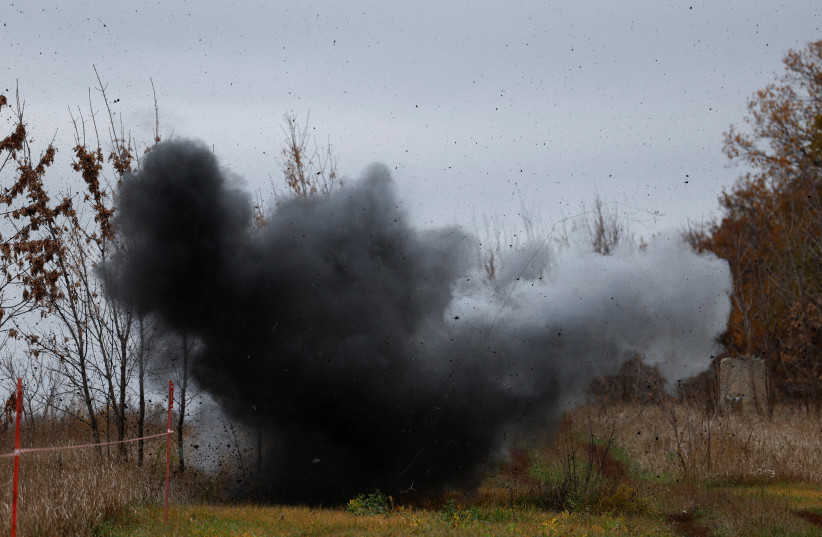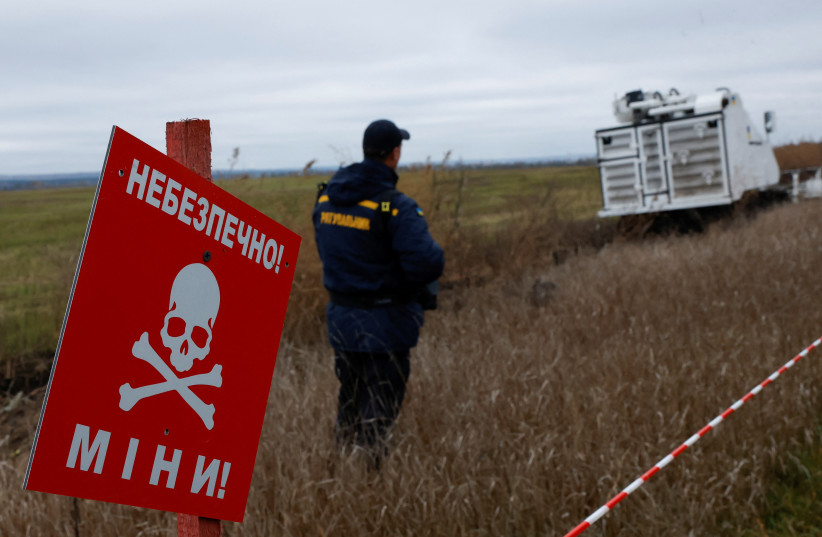The Russian Ministry of Foreign Affairs (MFA) recently accused the Ukrainian Armed Forces of planting PFM-1s, also known as butterfly mines, throughout residential areas of Russian-controlled Donbas.
"The fact that the Ukrainian nationalists even possess butterfly mines speaks volumes," wrote the Russian MFA on Telegram. "By signing the 1997 Ottawa Convention, Ukraine made a commitment not to use antipersonnel mines under any circumstances, not even on the battlefield, and to destroy all stocks of such mines held in arsenals."
The Russian MFA also claimed that "the use of butterfly mines goes against the Additional Protocol to the Geneva Convention Relative to the Protection of Civilian Persons in Time of War of August 12, 1949."
The Mine Ban Treaty

Ukraine did indeed sign the 1997 Ottawa Convention (also called the Mine Ban Treaty), which requires signees to cease the use, stockpiling, production and transfer of anti-personnel mines and destroy any current stockpiles.
At the time of signing, Ukraine claimed to be in the possession of 6,000,000 butterfly mines according to the European Union's Commission Implementing Decision on the Annual Action Programme 2013 in favor of Ukraine, which promised EU financial assistance to Ukraine in exchange for the destruction of its anti-personnel mines.
According to the United Nations Treaty Collection website, the Mine Ban Treaty currently has 133 signatories. Russia was never involved in the treaty and thus never made any effort to reduce its stockpile of anti-personnel mines.
In 2014, Ukraine submitted documentation to the Mine Ban Treaty Third Review Conference asserting that it had destroyed a cumulative 568,248 butterfly mines since ratifying the treaty and submitted multiple requests for an extension of the treaty deadline (by which time all mines must be destroyed) between 2018 and 2021.
Ukraine submitted its most recent report in January 2021, which put its stockpile numbers at 3,363,828 butterfly mines. Since then, there has not been any further effort to destroy the stockpile.
Russian use of butterfly mines
Ukrainian media source Pravda and German-based DW News have reported Russian use of butterfly mines against Ukraine at the outbreak of the war in February and March of 2022.
In August, the British Ministry of Defence stated: "In Donetsk and Kramatorsk, Russia has highly likely attempted employment of PFM-1 and PFM-1S scatterable anti-personnel mines. Commonly called the butterfly mine, the PFM-1 series are deeply controversial, indiscriminate weapons."
What is a butterfly mine?
Per the United Kingdom's Imperial War Museum (IPW) website, PFM-1 butterfly mines measure at 112mm (length) x 60mm (width) x 15mm (height) and have two "wings," one much thicker than the other. The thicker wing functions as the pressure activator for the mine's fuse which is contained in the central body between the wings. The thinner wing has no overt function besides stabilization during deployment.

The PFM-1 was originally developed in Russia. According to the IPW which cites the Landmine and Cluster Munition Monitor (the self-identified de facto monitoring regime of the Mine Ban Treaty), butterfly mines were first used operationally by Israel against Syria in 1973 during the Yom Kippur War.
These mines, made mostly of plastic, are designed to be deployed from planes or helicopters inside individual pods which automatically open to release the winged explosives. The wings allow them to spin through the air, slowing their descent so that they land without immediately exploding. The slow, fluttering descent is how they get the nickname, "butterfly."

Pressure beyond 5kg (approximately 11 lbs) activates the PFM-1, which contains 40 grams of liquid explosive according to the IPW.
A 1993 article in the journal International Review of the Red Cross described butterfly mines as "intended not to kill but to maim," due to the plastic design containing few metal parts.
